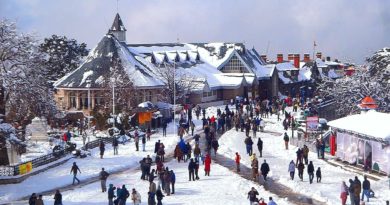A Gwalior Serenade
Gwalior fort two miles long and 35 ft high is said to be one of the most invincible in India. Mughal Emperor Babar called this strong, sinewy bastion which seems to surge out of the landscape, the pearl amongst the fortresses of Hind. Indeed, this magnificent citadel imposes itself on the visitor vision, seeming to demand in no uncertain terms that one gaze in awe at its might and admire its girth. As one wanders around the fortress, it reveals its secrets slowly, grudgingly; the stones seem to speak and lay bare the fort soul. Guides here love to relate with a great deal of drama and flourish, melancholy stories of love and lust; of trust betrayed and faith restored; battles won and lost; and royal sceptres snatched from the jaws of defeat
Raja Man Singh built the palace between 1486 and 1517, and with his prodigious appetite for the good things of life, he constructed exquisite chambers with julas or swings for his queens and underground swimming pools where they frolicked in privacy. Today, the once bejewelled chambers are now bare. At one time they were studded with mirrors and even diamonds. There were music halls where musicians played and their soulful music smoothed the fretted brow of the king who led an insecure life, never knowing when the enemy would attack. Dancing girls were like soothing drugs, helping the monarch to forget his cares.
The palace also saw the dark side of human nature prevail. When the Mughals took over the fort, Emperor Aurangzeb imprisoned his brother Murad who had dared to make a bid for the throne and had him hung on a makeshift gallows constructed in a circular chamber where the queens swings hung. The past shadowed one constantly in Gwalior swathed as it is with memories of kings whose profligate lives prompted larger-than-life exploits.
Power shifts occurred like seismic tremors and the Scindias, the hereditary chieftains of Kanedkhed in Maharashtra, captured the fortress of Gwalior from the Mughals in 1738. This became a Scindia stronghold from where the dynasty held sway over the region over the next two centuries up to India independence.
The legacy of the Scindia is best preserved Italianate 500-room Jai Vilas Palace where 35 rooms have been turned into the Jivaji Rao Scindia Museum. Here one views an overwhelming collection of treasures. These include the 15 kg shield of the Rani of Jhansi wore to protect her son who would be strapped to her back as she went into battle; swords used by Aurangzeb and Shah Jahan; ornate palanquins, Chinese screens, Belgian mirrors, French furniture… And a silver train with cut glass wagons from which guests could serve themselves as it chugged around the table on miniature rails. The museum offers a breathtaking glimpse of the royal lifestyle of a state, one of only five, that merited a 21-gun salute.
Gwalior, from ancient times, has been the centre of art and culture, giving rise to indigenous schools of painting and music. It was here that the great Tansen, father of classical Hindustani music, lies buried. His simple unostentatious tomb is more than a monument; it the heartbeat of the citys living heritage and the scene of a rousing annual music festival, a tribute to a legendary singer, one of Emperor Akbars nine navratnas.
Gwalior may not have the flamboyant but it has an alluring history, studded with the colossus-like exploits of kings and queens who lived life on an epic scale.
Fact File Regular flights connect Gwalior with Delhi, Bhopal, Indore and Mumbai.
Gwalior is on the Central Railways main Delhi-Mumbai and Delhi-Chennai lines. Among other major trains, the Taj and Shatabdi Express connect Gwalior with Delhi and Agra. Gwalior is well connected by road with the rest of the country.
Gwalior is the northern apex of MP golden triangle that includes Shivpuri National Park and Orchha, an enchanted settlement studded with ancient monuments. Jhansi, Datia and the Jain temples of Sonagiri fall within the circuit. One can also visit the Bateshwar temple excavation site some 30 km outside Gwalior and the neighbouring Mitaoli temple which inspired British architects Baker and Lutyens when they design the Parliament House in Delhi.
